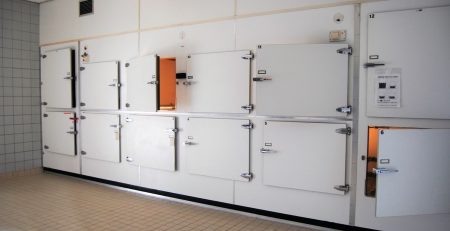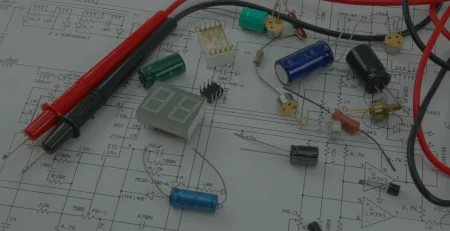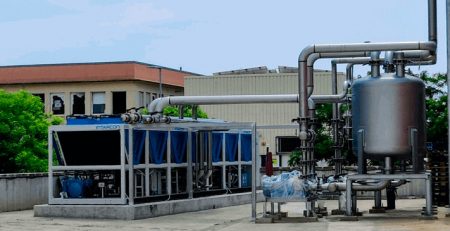Efficient and environmentally friendly refrigeration
INTARCON2022-12-05T12:32:37+01:00Today, efficient and environmentally friendly refrigeration is one of the objectives of the sector, as one of the main threats we are facing is climate change and the possible deterioration of the environment that can be caused by the incorrect use of unsustainable and environmentally unfriendly refrigerants.
Current legislation and the development of new, more efficient and environmentally sustainable refrigeration technologies mean that our work for the cause is growing, although there is still a long way to go.
What are the most efficient and environmentally friendly refrigeration technologies?
The use of natural refrigerants is a key factor in making refrigeration more efficient and environmentally friendly.
These refrigerants are substances that exist naturally in the biosphere. Their main characteristic is that they have low or zero global warming potential (GWP) values.
In addition, the existence of legislation in place to regulate refrigeration installations that could be damaging to both the environment and the safety of workers has encouraged the development and use of natural refrigerants.
Nowadays, the most efficient and environmentally friendly refrigeration technologies are those that use natural refrigerants such as NH3 (ammonia or R717), CO2 (carbon dioxide or R744) and hydrocarbons. In the case of hydrocarbons, the refrigerant par excellence due to its efficiency is R290, commonly known as propane.
On the other hand, there are indirect refrigeration systems in which, thanks to the use of glycol as a secondary refrigeration fluid, the use of any other refrigerant is significantly reduced, making it an efficient and sustainable method of refrigeration.
Finally, water loop refrigeration systems stand out for their efficiency and performance, reducing the primary refrigerant charge.
These refrigeration technologies with natural refrigerants stand out for their efficiency and low impact on the environment:
Natural refrigerant NH3 (Ammonia)
This natural refrigerant is notable for its zero ozone depletion potential (ODP) and global warming potential (GWP). In addition, its excellent thermodynamic properties make it one of the best candidates among natural refrigerants.
It is a low flammability but high toxicity (Safety Class B2L) refrigerant, so safety is paramount in ammonia refrigeration systems. Its applications are therefore limited to low-load applications or industrial systems.
All this results in a refrigeration system:
- Efficient, due to its high refrigeration performance.
- Reliable, due to the current regulations that regulate the safe application in your installations.
- Safe, due to the necessary safety measures and its easy identification due to its strong characteristic smell in case of leakage.
- Sustainable, because it has zero GWP and ODP indexes.
In this way, the NH3 refrigeration technology implies:
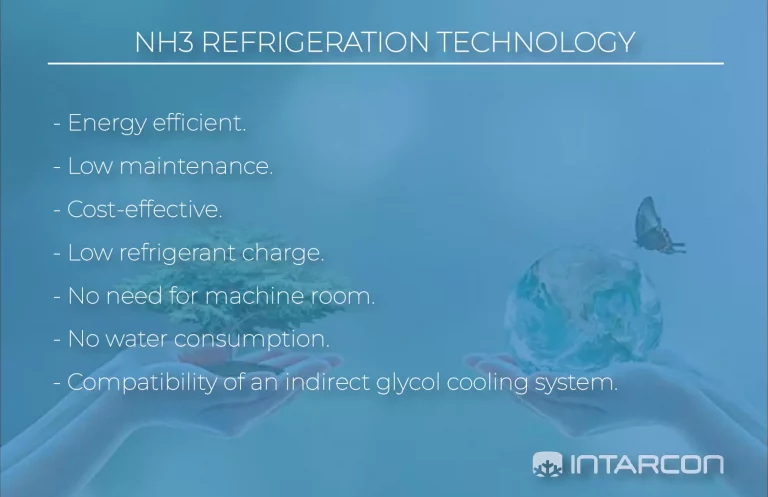
R744 (CO2), a refrigerant with low environmental impact
Carbon dioxide has been considered as a good alternative to replace HFCs (hydrofluorocarbons) as it has zero atmospheric depletion potential (ODP=0) and minimal global warming potential (GWP=1). It is a non-flammable refrigerant with low toxicity (Safety Class A1).
This refrigerant is notable for its high thermal conductivity and high density in the gas phase, which results in good heat transfer in evaporators, coolers and condensers.
Its limitations are that its leaks are difficult to detect, so it could be harmful to health in case of leakage, besides being difficult to detect, so you should have a leak detection system and have an emergency ventilation system.
CO2 refrigeration technology offers:
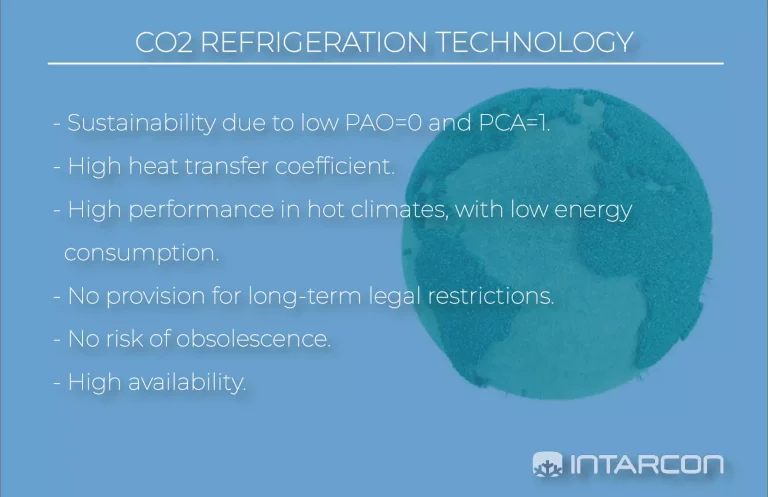
The natural and environmentally friendly refrigerant R290
Propane or R290 is the most popular and common hydrocarbon in commercial and industrial refrigeration. It is a refrigerant with a zero ozone depletion potential (ODP=0) and a global warming potential equal to three (GWP=3). This gas is fully compatible with the legislative constraints of the F-Gas, and stands out for its efficiency and performance. It is characterized by being a non-toxic, but highly flammable refrigerant, which implies high safety in your installations.
R290 or propane refrigeration is probably the most widely used sustainable and efficient refrigeration. It is mainly used in commercial applications commercial applications, although it is also widely used in water loop cooling or indirect cooling systems.
R290 refrigeration technology is characterized by:
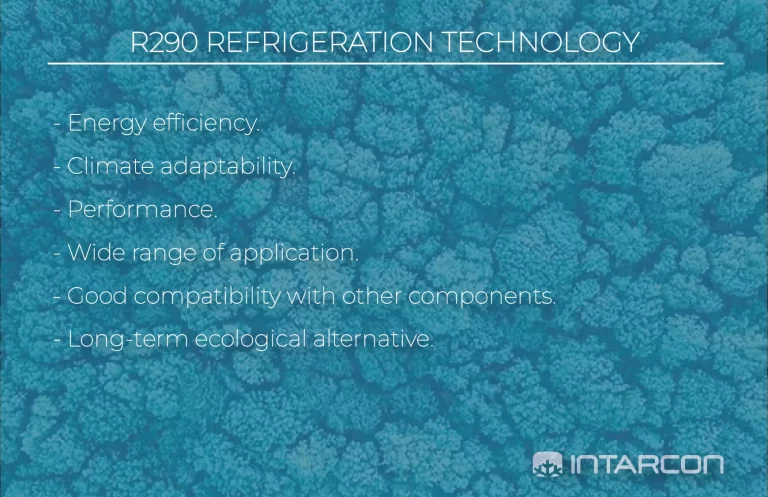
Glycol, an environmentally friendly alternative
This alternative is notable for reducing the use of refrigerants in refrigeration systems, as the glycol is used as a secondary fluid that is responsible for transferring the thermodynamic properties of the primary refrigerant into the secondary circuit. In this way, the load of ozone-depleting gases is reduced and sustainable and efficient cooling is achieved.
In addition, this refrigeration method results in a considerable reduction in refrigerant costs, risk of leakage and electricity consumption. On the other hand, it is fully compatible with current regulations that limit the refrigerant charge, in this case, the F-Gas.
Glycol refrigeration technology is a good alternative because:
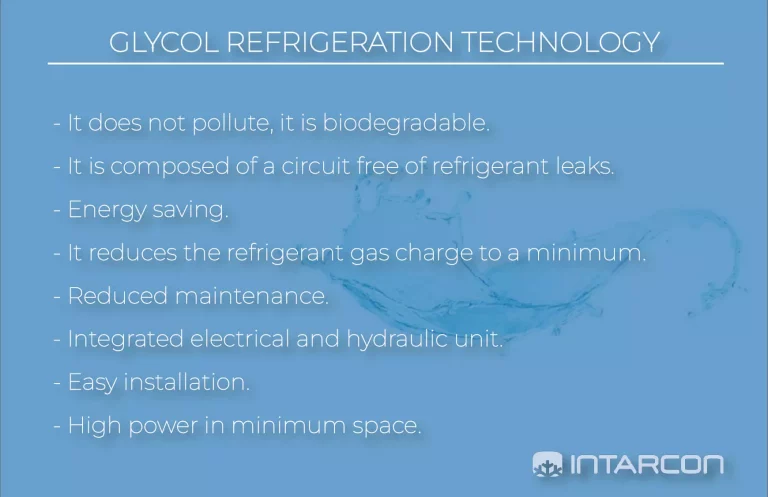
Water loop refrigeration system
This technology is based on a series of distributed refrigeration systems with indirect condensation using a water circuit. On the other hand, one or more air-cooled units in parallel for the evacuation of the condensation heat.
Thanks to the operation of this system, the environmental impact is reduced, due to the low refrigerant charge, making this cooling system sustainable and efficient. On the other hand, this system reduces refrigerant charging costs and the risk of leakage, as the cooling circuit would contain water. In this way, it also increases the safety ratio in these installations.
Water loop cooling technology offers a solution:
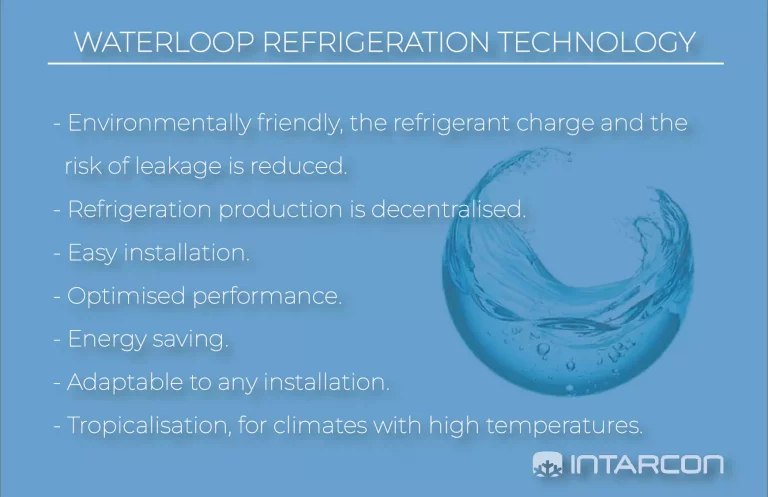
Product range with efficient refrigeration
INTARCON focuses the development of its product range on new developments in refrigeration technologies with natural and low-charge refrigerants. In this way, our equipment, with the use of natural refrigerants, contributes to the preservation of the environment and the ozone layer. Furthermore, they comply with legislation and possible changes in the regulation of the use of refrigerants in different types of applications.
At INTARCON we value the development of sustainable and efficient refrigeration. In addition, we provide our customers with the best developments in each of these technologies, such as:
- Ammolite range: refrigeration systems with NH3 (R717 or ammonia) that incorporate the lowest charge on the market and therefore stand out for their efficiency and high cooling performance ratios.
- Commercial and industrial range with R290: a wide range of products for the use of natural refrigerant R290 achieves high performance and high efficiency of our equipment thanks to the highly developed R290 or propane refrigeration technology developed at INTARCON.
- CO2 product range: CO2 units are characterized by their compact construction, low refrigerant charge and high performance and efficiency.
- Range of glycol chillers: a wide range of indirect glycol refrigeration systems are characterized by high efficiency and high performance at the lowest possible load. This makes our systems safe, efficient and economical.
- Waterloop range: the waterloop refrigeration units stand out for INTARCON’s own innovative development, the waterloop motoevaporators, in which we are pioneers of this technology. These are compact evaporator units with integrated compressor, designed with R290 natural refrigerant and condensed in a water loop.



